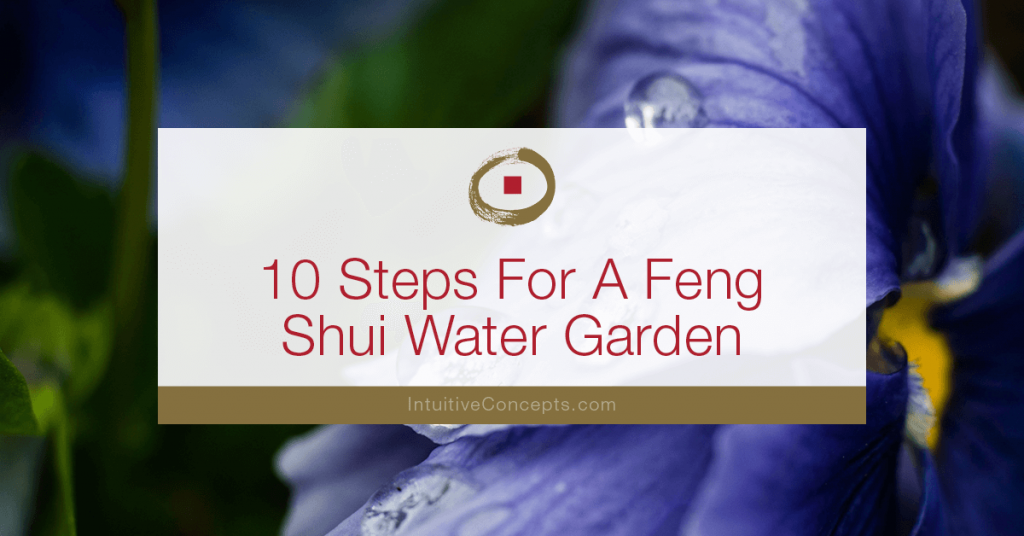 1. Do you want to increase your luck when it comes to prosperity and abundance? Start by understanding where the one-water number is positioned in your structure. A flying-stars assessment determines this. When you place a water feature outside of where this quadrant is in the building, you increase your chances of prosperity and abundance substantially. Otherwise, the general rule of thumb is it is most desirable for a water feature to be in front of the structure. Of course, it is best to know whether the structure is double sitting, double facing, or reverse (again, determined by flying stars); as these determine more precisely where it should go in order to support the structure (versus undermine it).
1. Do you want to increase your luck when it comes to prosperity and abundance? Start by understanding where the one-water number is positioned in your structure. A flying-stars assessment determines this. When you place a water feature outside of where this quadrant is in the building, you increase your chances of prosperity and abundance substantially. Otherwise, the general rule of thumb is it is most desirable for a water feature to be in front of the structure. Of course, it is best to know whether the structure is double sitting, double facing, or reverse (again, determined by flying stars); as these determine more precisely where it should go in order to support the structure (versus undermine it).
2. Evaluate the architecture of the building and surrounding buildings. Should the water feature be formal or informal? An example of formal is trimmed hedges and plants. An example of informal is casual and less structured. Do the garden (discussed below) and water feature need to be childproof? Remember Feng Shui is about working with the environment, so if you’ve done a good job, animals will be attracted. What can you do to discourage unwanted vermin, and encourage good ones (earthworms, birds, bees, or butterflies)? Our water garden attracted Labrador retrievers (dogs that love water), and children wanting to fish. Then we ran the risk of an accident and had to take liability precautions. One time there were sticks tied with string and erasers. It was funny at first, but we ended up installing a fence for their protection as well as ours. Your next steps are to decide on the size and depth of the water feature, and water filtration/maintenance features. Water should move, not be stagnant.
3. Will the water feature be inclined to flood when it rains? Will anything cause water to back up into your pond or fountain? Is it possible run-off from contiguous properties will enter your pond, pool, or fountain. If yes, what effects will that cause to humans, fish, or animals? Will it have adequate drainage that won’t affect the building or neighbors? In Feng Shui there is a water formula that shows how water should flow, and drain. Ideally, no one should see where the water exits.
The rest of this article is for water gardens.
4. Plan your garden so it simulates the perfect Feng Shui environment – an armchair.
- That means there’s a high back (even if it’s a statue or wall) that represents the tortoise (protection); which represents the North.
- There should be a knoll on the right side (as you’re facing the back) even if it’s a bushy plant. This represents an armrest; and the East dragon.
- Another knoll should appear on the left side (as you’re facing the back). This represents the other armrest; and the West tiger.
- And, it’s ideal the front overlook the water.
5. Will the water garden slope toward or away from the front of the building? What are you considering for the size and shape of the water feature? Take into account existing features such as plants or structures. Mark their position on a piece of grid paper. Using the grid paper, draw the garden as though you’re viewing it from the sky (called an aerial view). Scale it as accurately as possible and include the position of the building, the front door, existing garden and geographical features.
6. Using a compass, take several readings and note North, South, East and West directions on the layout. When taking a compass reading, avoid metal, as well as magnetic and electric influences (such as vehicles, septic tanks, electric poles, and wires, etc.).
7. What is the direction of the sun? How do shadows cast over the proposed water garden? Are there areas that will have full sunlight most of the time? Are there areas that won’t receive much sunlight most of the time? Full sun is yang; partial to no sun is yin. Knowing how much sun the plants and the water will have is crucial to a successful garden.
8. Investigate plant families that do well in your zone. Talk with neighbors about their successes, and visit nurseries. Are there trees around that will drop leaves or seeds into the water?
9. Lay a bagua template over your plan. How do aspiration sections complement the natural conditions of your garden? Make notes of anything that already exists in the Southeast, East, and North sections. If something is going to remain, does it complement the elements for those sections (water feeds wood, and SE and East are wood; metal feeds water, and North is water).
10. Have a telephone number handy of another enthusiast or local garden center. Of course, before you dig, have the utility and cable companies mark your property. Then start digging and have fun! The rewards of watching it evolve are wonderful. So is spending time near it.
Of course, anything worth doing is worth doing well. A water feature is an investment in your property and future. Instead of guessing, hire a Feng Shui professional to assist. I’d be happy to help!
May you be exceedingly, generously, and joyfully blessed,© ~Diana


Leave A Comment